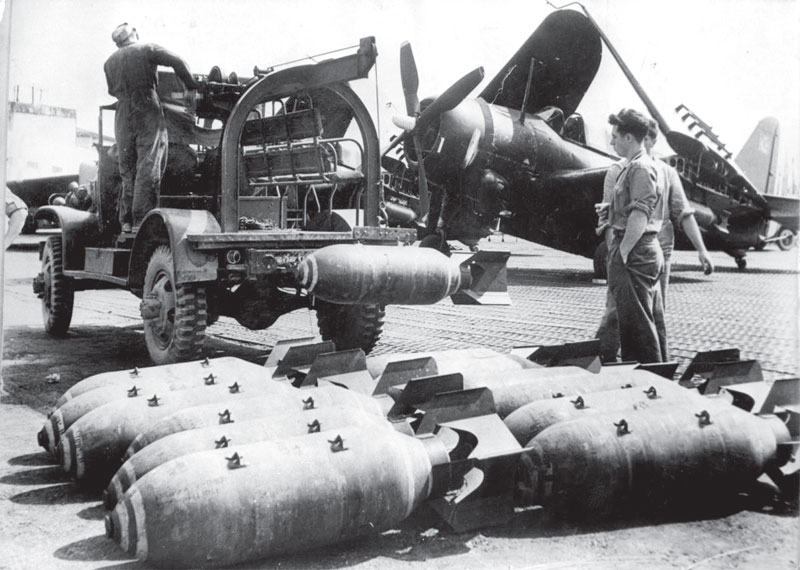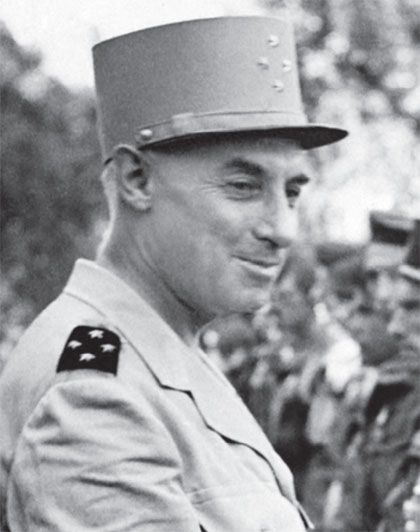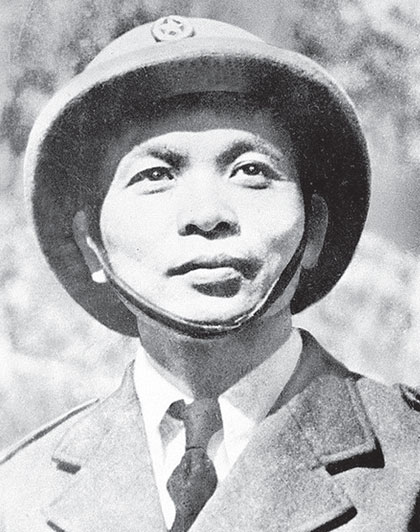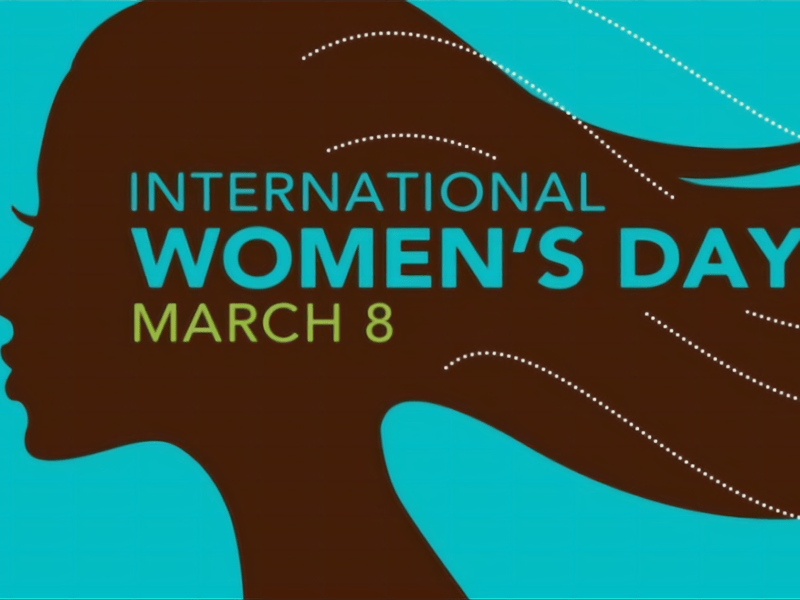- From the Battle of Dien Bien Phu – Vietnam.
On 2 September 1945, hours after the Japanese signed their unconditional surrender in World War II, communist leader Ho Chi Minh announced the self-governing Democratic Republic of Vietnam. He intended to prevent the French from reclaiming their former colonial possession. However, in 1946 he unwillingly accepted a French proposal that allowed Vietnam to exist as a self-governing state within the French Union. Subsequently, the French tried to re-establish colonial rule by force. As a result, fighting broke out.
Beginning in 1949, the Viet Minh (the organisation that led the struggle for Vietnamese independence from French rule) fought an increasingly effective guerrilla war against France with military and economic assistance from Communist China and also from the Soviet Union. France received military aid from the United States.
In November 1953, French military forces stationed in Vietnam and the Viet Minh fought a battle in Dien Bien Phu valley in Vietnam for supremacy of this strategic location. It’s a mountainous border province in the northwestern region of Vietnam. French military commander General Henri Navarre who took command of the French Expeditionary Corps (FEC) in Indochina on 19 May 1953, wanted to establish a defensive complex at Dien Bien Phu. By doing so, he had two primary objectives.
The first objective was to attack and cripple the supply lines into Laos (which was also under the rule of the French) that supported the growing insurgency in Laos. The second was to provoke the Viet Minh into open and conventional warfare. General Navarre was confident that his forces would prevail in this type of warfare.
Having strategised the plan, he got five of his battalions numbering 15,000 troops parachuted into 20 km long, 6 km wide valley surrounded by hills. Although the Vietnamese quickly cut all the roads into Dien Bien Phu, making the garrison approachable only by air, the French were confident of their position. Colonel Christian de Castries appointed the officer in charge of the military base.
The Vietnam forces had been led by General Vo Nguyen Giap the Commander in Chief of the Viet Minh who was regarded as one of the greatest military strategists of the 20th century. He led his men against two superior countries, France and the USA victoriously during the years 1946 to 1975.
He was the most trusted General of Ho Chi Minh. Most of his strategies were exceptional and highly effective. On this occasion also he did nothing to stop the initial incursion of the French other than closing their land supply routes. But, for four months, his troops were getting themselves prepared for a well-planned assault.
He strategised and executed an effective tactical plan to regain control of Dien Bien Phu valley. The French failed because they overestimated their own strengths and greatly underestimated the skills, resources, and determination of their opponent. This article will critically analyse the leadership traits displayed and the strategies adopted by both Generals in winning and losing the battle of Dien Bien Phu from a non-militarised and non- politicalised perspective.
Flying bulldozer.
Duc and Dung two little boys who were living in the nearby highlands of Dien Bien Phu valley have experienced a mind-boggling scene which they had not been told to be possible by anyone before. The two boys were looking down from a hilltop; at the valley below them inquisitively. They were observing the activities that the day before Para-dropped French soldiers were doing down there.
Unexpectedly, they noticed a French fighter bomber appearing from the horizon skies approaching the same location. The fighter jet bomber dived low over and airdropped a bulldozer using five parachutes. Puzzled with the scene that they just experienced Duc and Dung ran back home telling their parents about the flying bulldozer. Had that been heard by an imaginative mind; the flying bulldozer would have been an exceptional source for folklore among Vietnamese, to date.
Flamboyant style of General Navarre.
This para-drop operation was code-named Operation Castor. The operations began at 10:35 hrs on 20 November 1953. Military records indicated, on 21 November 1953, the French dropped 9,000 troops into the area over three days, along with a bulldozer to prepare an airstrip for them to land their fighter jets. It would have been the bulldozer seen by little Duc and Dung.
Operation Castor was a brainchild of General Navarre. He didn’t make his superiors in France aware of the launch of this highly sensitive operation though they had been briefed of the importance of this strategic point. Authorities in France did not learn of the operation until six hours after it started.
Two of his senior officers General Rene Cogny and Senior Air Force Commander were not in favour of the operation. After intelligence reports on 3 December 1953, reported four enemy divisions approaching Dien Bien Phu, General Navarre issued orders to hold Dien Bien Phu at all costs. But then again by January 1954, he started exploring plans for withdrawal. However, soon he realised any getaway attempt would be suicidal and kept his forces in the garrison to counterattack.
General Navarre had his favourites in his side who were with him and cheered him up. One of them had been Colonel Piroth, the French artillery commander. He promised General that he would neutralise the Viet Minh artillery using minimum firepower. His men were so confident of French artillery superiority that they even didn’t dig in their artillery pieces, which contributed to unexpected losses of artillerists and equipment early in the battle.
After two days of ineffective French counter-battery fire and Viet Minh artillery superiority, Colonel Piroth committed suicide. The French forces expected to rely on the airstrip to resupply the garrison, wrongly assuming that the Viet Minh had no anti-aircraft weapons. But they were well-equipped with the Soviet Union-built anti-aircraft weaponry.
Approach of General Giap.
Ho Chi Minh was well-aware of his General’s capacity. They two had a great understanding and trust for each other. General Giap was a mastermind military builder. He has transformed a ragtag band of rebels to a fine light-infantry army. During the preparation stages of the Dien Bien Phu battle, he got his men to transport ammunition, weapons, and food stocks on bicycles to the surrounded highlands.
Heavy artillery too was hauled up to hilltops in the height of 1,400 to 1,800 feet by his labour force. Defying standard military practice, he had his twenty-four 105mm howitzer cannons placed on the forward slopes of the hills around Dien Bien Phu, in deep, mostly hand-dug emplacements protecting them from French aircraft and counter-battery fire.
The entire offensive strategy was done in isolation. They spread out through the steep hills until his men surrounded the Dien Bien Phu valley. He ordered his men to dig a trench system that encircled the French. From the outer trench, other trenches and tunnels were gradually dug inward towards the center. General Giap’s men were guerrilla militants who had the edge over their opponents in unconventional warfare. The Viet Minh were now able to move in close to the French troops.
The French brought in more than 15,000 troops but this sizeable force was stretched thin defending the large perimeter. And they were badly outnumbered. The Viet Minh had almost 50,000 troops. These men were fighting to protect their motherland from the invaders whilst General Navarre’s men had different attitudes towards their engagement.
His troops integrated with French, South Vietnamese, and North Africans. General Navarre’s Operation Castro looked like a show-off whereas General Giap’s approach was an unseen time bomb laid underneath. By 13 March 1954, the attack on Dien Bien Phu had begun.
In the textbook example of guerrilla warfare that followed, the Viet Minh mauled battalion after battalion of French infantry and marines, backing up their hit-and-run and occasional human-wave tactics with deadly artillery fire. With anti-aircraft guns supplied by the Soviet Union General Giap’s men were able to severely restrict the ability of the French to supply their garrison, forcing them to drop supplies inaccurately from high altitude. General Navarre’s plan of engaging Viet Minh militants in conventional warfare didn’t materialise.
Operation Atlante – Bad to worst.
General Navarre initiated a second offensive operation on 12 December 1953, committing nearly twice as many troops to Operation Atlante in south-central Vietnam, over 400 miles from Dien Bien Phu to divert the attention of Viet Minh. General Navarre pretended Operation Atlante was his main effort. He even speculated that a loss in Dien Bien Phu was strategically acceptable. General Navarre failed to consider the devastating effect of the loss that would damage the morale of his men, and the impact it created to disappoint the political support for the war at home.
After some initial success, Operation Atlante turned into a series of Viet Minh ambushes on French convoys. When General Navarre realised that he was trapped, he appealed for help. The United States was approached by the French government and some advisers suggested the use of nuclear weapons against the Viet Minh, but this was never seriously considered. Another suggestion was that conventional air raids would be enough to scatter General Giap’s troops.
President Dwight D. Eisenhower, however, refused to intervene unless the British and other Western allies agreed. British Prime Minister Winston Churchill declined, claiming that he wanted to wait for the outcome of the peace negotiations taking place in Geneva, before becoming involved.
General Navarre eventually terminated Operation Atlante with no tangible gains while Dien Bien Phu was lost on 7 May 1954, after a siege of 54 days. Colonel De Castries, French Commander in Dien Bien Phu, was captured alive in his bunker.
The following day the French government announced that it intended to withdraw from Vietnam. Peace talks began in Geneva afterward. Any negotiating advantage the French government had expected was lost due to Navarre’s misjudgements. Many French business interests left Vietnam and the ultimate loss in Vietnam was approximately $ 10 billion. That was the end of the First Indochina War.
Conclusion.
The French lost the battle to the Viet Minh, underdogs led by General Giap. Battle of Dien Bien Phu demonstrated many lessons on leadership and strategic planning. General Vo Nguyen Giap (who died in 2013, aged 102) had mastered the art of patience, timing, organising effectively, managing resources, communicating forcefully, maintaining trust and confidence among team members, having high competency levels, thinking innovatively and creatively, maintaining confidentiality, having a high commitment, networking for influential contacts, applying clever strategies, receiving accurate and reliable intelligence data, and ability to analysing them effectively. He maintained a high efficacy ratio in all what he did.
General Henri Navarre (who died in 1983, aged 85), commander of the French forces, had neglected many traits in his leadership role and preparation of strategies. He was overconfident, didn’t consider pros and cons mostly, failed to win the majority support of his team, didn’t adhere to correct protocol, lost the confidence of his superiors, didn’t consider the overall impact, and made many calculating errors during the process.
Self-managing ability, executing effective decisions at the right and appropriate time, managing limited resources, effective communication, creative thinking, building forceful and influential connections, winning trust and confidence of superiors, followers, and other stakeholders, training of followers, formation of winning teams, managing complexity, adaptability to any situation, ability to evaluate strengths, weaknesses, threats and opportunities at the inception and during the process based on available data and finally, the genuine attitude and vision towards its final destiny are the main elements in the winning formula of effective leadership.








